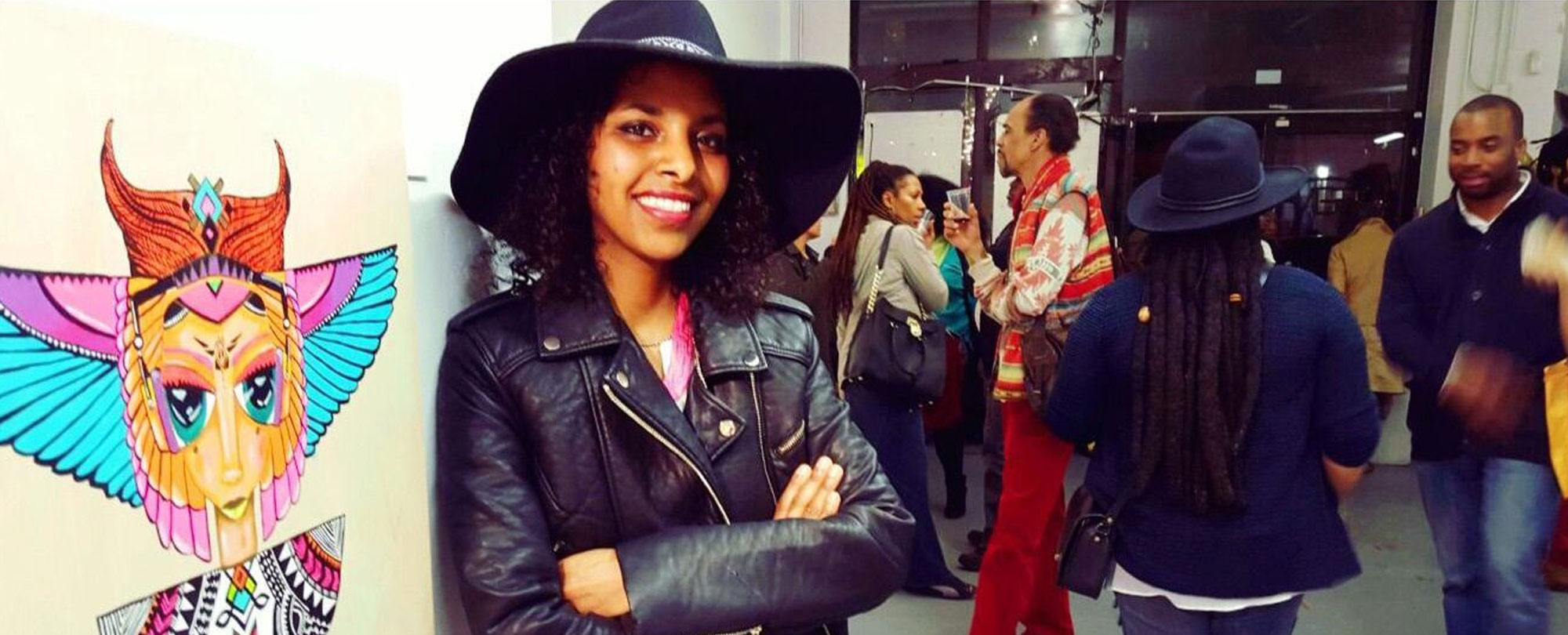New-York-based, 39-year-old Hirut Yoseph immigrated to Israel from Ethiopia when she was 5 years old, and began to gradually discover her artistic calling through the merging of her cultures. A self-described ‘world citizen,’ her work explores themes of immigration, identity, and belonging, while seeking to build a visual bridge between Ethiopia and Israel, as well as other places she’s lived, most recently, the United States. Hirut reflects on the important women in her life, storytelling, and Ethiopian street art.
What’s the Israeli community like in Ethiopia?
Right now, there is not a strong Israeli community in Ethiopia. We’ve all immigrated to Israel. We’re called the Beta Israel. We identify first as Ethiopian Jews, and then as Israelis. So there is not a sizeable Jewish community in Ethiopia like there used to be.
How long did you live in Israel and where are you based now?
I was in Israel for more than 20 years. And now I’ve lived in New York for the past 4 years.
You’ve said that your mother and grandmother were big sources of inspiration for you. How so? What other women?
There are four women who inspired me throughout my life, which are my grandmother, my mother, and my two sisters. That’s where my inspiration started; those 4 ladies are the main sources of my work. My mother used to do embroidery. She made very colorful pieces with geometric patterns, almost like paintings. My grandmother used to do a lot of clay work, and also draw on the clay. And I got to spend a lot of time with my grandmother, and had a chance to go through all of her dresses, and all of the things she carried with her from Ethiopia back to Israel. I was always trying to understand how I was different from others. I think I found the answer in my grandmother.
You were a student at Tel Aviv’s Shenkar College of Engineering and Design?
Yes, I went to Shenkar College. It’s actually one of the best schools for fashion in the world. Alber Elbaz, former creative director of Lanvin, graduated from there, as well as several other reputable designers.
Tell me about your creative process.
My creative process, it’s never-ending. It depends on where I am, and what kind of people are around me. Before I went to fashion school, I decided to go and travel to Ethiopia with my sister and my older brother, and that was the first time I’d been back since I was 5 years old. I think that was the first real connection for me after having been away for so long from my culture, from my people. Since that visit, every time I start a new series of work, I travel to different parts of Ethiopia for inspiration. I lived in Turkey for 10 years after moving from Israel, and would travel to Ethiopia every year. I take a lot of pictures, which are very important for me, and I do a lot of research as well. And now, being in New York, I have so much inspiration around me.
How do you envision your work building a bridge between Ethiopian and Israeli culture?
I’m still working on it! I think it’s already in there, that merging, because I’m ‘both worlds,’ even if I don’t want to be. For example, I get inspiration from Ethiopian traditions but give it my own interpretation because I’ve also been influenced by Western culture, in the States and while I was growing up in Israel, by hip hop and street art. I did some street art and that’s not something that’s very acceptable in the Ethiopian arts, but I did that because I thought Ethiopian aesthetics should be seen on the streets.
What is the story you are telling through your work?
The story that I’m telling is my story. It’s also the story of my mother and grandmother. They were such powerful women and both of them passed away. For example, my mother was forced into marriage at 9 years old, and ran away. So it’s the story of women immigrants, of being different, of trying to be understood – as a black woman, sometimes as a Jewish black woman. I have all these heavy things on my shoulders, which some people judge you for. I’m Jewish. I’m black. I’m a woman. I’m an immigrant. But it starts with my mother’s story, that’s how I carry her memory on with me.
What is your biggest hope for the future?
As an immigrant, who moved from Ethiopia to Israel to Turkey and now to New York, being [in New York], it’s the first time I don’t feel different, like people don’t look at me like I’m from Mars. My biggest hope is that people start to be much more understanding towards differences. And I don’t know if it’s wild to say but I’d like to see a borderless world where people can just move freely from one place to another, without having to go through all of these horrific processes. So I’m hoping for the day where we can live without borders – that would be amazing.
